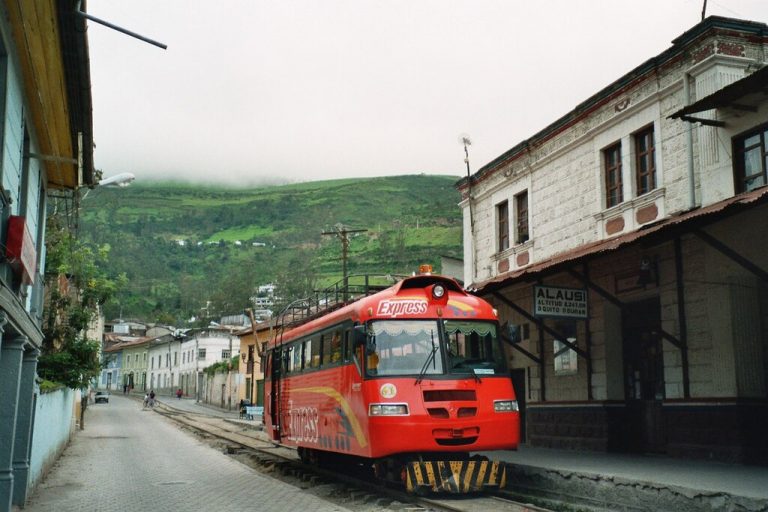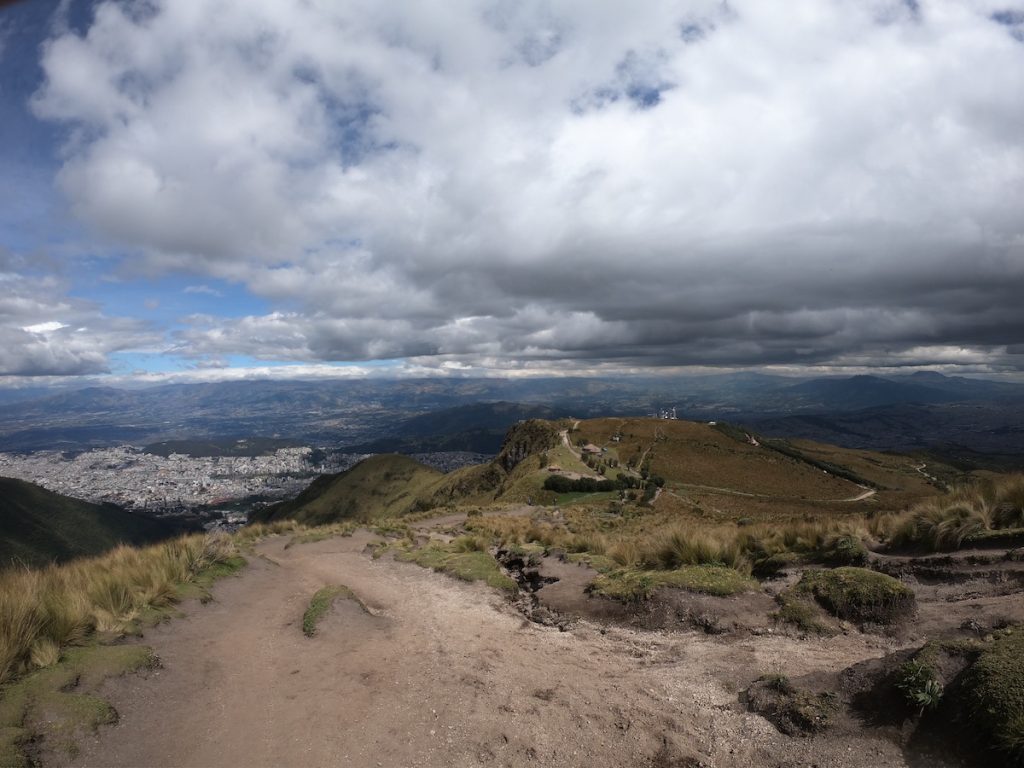Unfortunately, due to the devastating impacts of the COVID-19 pandemic, the Devil’s Nose Train operations have been suspended and the company has faced bankruptcy. Despite this, I still want to share the memories of our journey aboard this legendary train. The crisp Andean air whipping around us as we marveled at the breathtaking panoramas, the excitement of navigating such steep terrain by rail, and the warmth of the Ecuadorian people are memories that remain as vivid as ever.
The Nariz del Diablo, or “Devil’s Nose” train, holds a special place in Ecuador’s travel scene, winding dramatically through the rugged Andes Mountains. Known for its impressive engineering and breathtaking views, this historic railway route is a unique experience that once captivated countless travelers, including myself, and was often touted as a must-do in Ecuador.
While the Nariz del Diablo train faced financial hurdles that eventually led to its closure, its story remains a fascinating chapter in Ecuadorian history. In this guide, I’ll share the captivating journey of the Nariz del Diablo, from its engineering marvels to the cultural significance it still holds today.
Although the Devil’s Nose Train has ceased operations, the memories and stories of this iconic journey live on. Plan your adventure to Alausí today and explore the region’s rich culture, breathtaking landscapes, and unique history with trusted local guides!
Plan perfect trip to Ecuador & Galapagos
I spent countless hours researching everything about traveling to Ecuador, and I created this blog for fellow travel enthusiasts who want the best, most reliable information. But if you want to save time, we’ve partnered with the top local agency to plan your dream trip.
The History of Nariz del Diablo
Where is the Devil’s Nose Train Located?
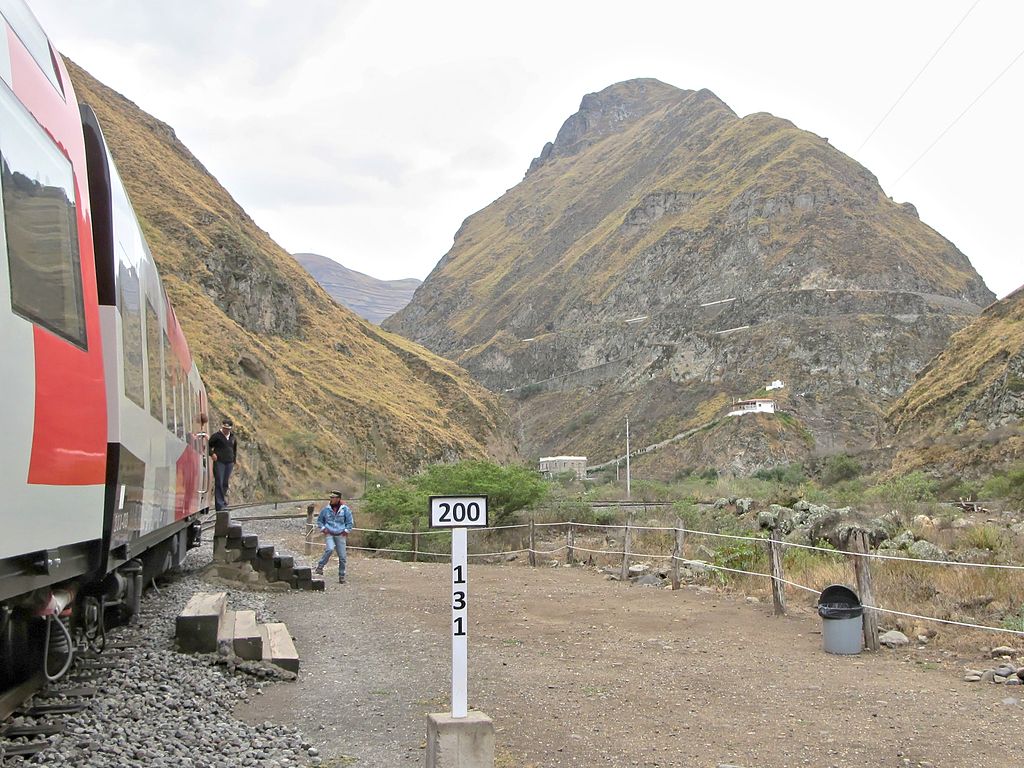
Alausí, nestled in Ecuador’s Chimborazo province, became one of our most memorable stops on the way to Cuenca, especially with the famous Devil’s Nose Train waiting to be experienced. The town itself, with its scenic charm and friendly locals, sits in the heart of the Andes, offering views that seemed to stretch on forever.
If you’re heading toward Cuenca, I’d definitely suggest taking a break in Alausí. Experiencing the Devil’s Nose Train here isn’t just a ride—it’s a journey through history, surrounded by dramatic mountain landscapes that left us in awe. It truly added something special to our Ecuadorian adventure.
How To Get To The Devil’s Nose Train?
From Guayaquil
La Nariz del Diablo in Ecuador is located near the major city of Guayaquil. However, reaching this attraction still requires considerable travel time. When we drove to Alausi, the journey took approximately 3.5 to 4 hours.
While it is possible to travel by bus from Guayaquil to Alausi, direct buses were unavailable during our visit. Based on the information I gathered, taking a bus would have required multiple connections and a total travel time of over 8 hours.
From Quito
Coming from Quito, the journey to La Nariz del Diablo in Alausí was surprisingly straightforward. Despite being farther than Guayaquil, the 5.5 to 6-hour drive along Ecuador’s main highway (E35) made the trip feel manageable. This route doesn’t have those nerve-wracking cliffs and steep roads, so it was more relaxing than I’d expected for an Andean road trip.
For those who prefer public transport, taking a direct bus from Quito is a convenient option. These buses run straight through to Alausí without the need for multiple transfers, and while they do make stops along the way, it’s a smooth, hassle-free way to travel if you’re comfortable with a longer ride. And with buses between Quito and Cuenca passing through Alausí, catching a ride to this iconic spot is accessible for any itinerary.
From Baños
If you’re traveling between Quito and Alausí, I definitely suggest a few days in Baños as a worthwhile detour. We decided to break up our trip with a stop here, and it added so much to the Ecuador experience. The chance to relax in Baños’ hot springs, explore its waterfalls, or try some adventure activities was a fantastic way to balance out the journey.
Direct buses between Baños and Alausí aren’t available, so we caught a bus from Alausí to Riobamba, then transferred onto another bus to Baños. With a bit of luck on our timing, the whole trip took around 3.5 hours, making it a manageable detour with some added adventure along the way!
Best Time To Ride the Devil’s Nose Train

This attraction is a pleasure to visit year-round, but we found that timing our trip between July and September gave us a particularly great experience on the Devil’s Nose Train. This season brought clearer skies and less rainfall, which made for smoother travel and allowed us to fully enjoy the scenic views. Just a heads up: the weather is a bit cooler compared to the summer, so having a light jacket came in handy during the ride.
Nariz del Diablo Tickets and Schedule
Pre-booking tickets for the Nariz del Diablo train was definitely the way to go—it saved us from any last-minute stress and ensured we got the seats we wanted. If you’re a spontaneous traveler, though, tickets are also available right at the Alausi train station, conveniently situated in the center of town where you’ll board the train.
Tickets are priced at $40 per person, and the train runs every day except Mondays, with departures at 8 AM and 11 AM. We chose the 8 AM trip and were rewarded with clear skies and stunning views that only added to the magic of this journey through Ecuador’s Andes.
Alausi Train Station
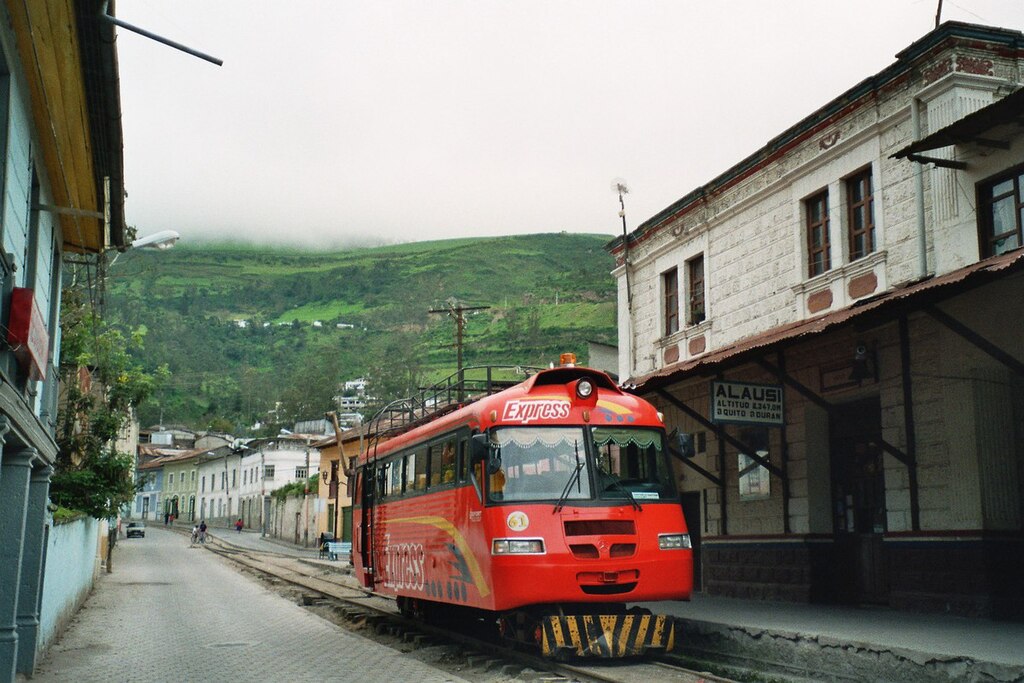
The Alausí train station is easy to spot right in the center of town, which made getting there a breeze. If you arrive with time to spare before departure, a nearby café serves up snacks and coffee—perfect for grabbing a quick bite. We also brought our own snacks and drinks on board, as there are no food services on the train itself.
The Nariz del Diablo train offers both double and single seats arranged to face each other with a fold-out table between them. We found our seats using the online seating plan, which clearly shows the layout. The seats themselves were spacious and comfortable, with a handy luggage rack for smaller bags and essentials. Each carriage also had a bathroom at the end and trash bins along the aisle, which kept things tidy.
Without Wi-Fi or power sockets, the journey encourages you to put away devices and focus on the scenery. The train’s interior is simple yet elegant, featuring polished wood paneling that adds a touch of classic charm. It’s clear the train is well-maintained, and the overall ambiance feels both clean and inviting, letting you relax and take in the Andes in comfort.
Discover the magic of Alausí, where history, culture, and stunning Andean scenery come together. Let us help you plan a personalized trip to this unforgettable destination. Get your FREE travel quote now and support local communities while experiencing the beauty of Ecuador!
The Scenic Journey
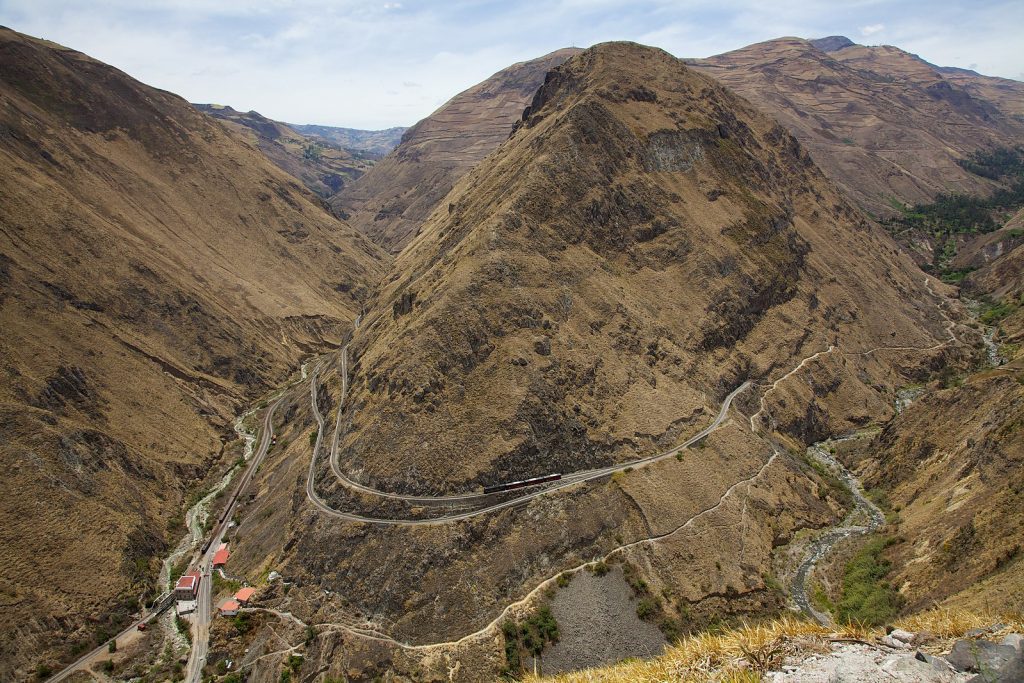
Our journey on the Nariz del Diablo train kicked off right on time at 8 AM. As we rolled out of Alausí, the sight of the Andes surrounding us was breathtaking. It didn’t take long before the city faded into the distance, and we began winding along the steep mountainside, dropping over 500 meters in altitude along the way. The tracks followed the river, with tall cliffs flanking us on both sides—a truly remarkable scene.
In just about 10 minutes, we arrived at Sibambe Station, where we had about an hour to take in the sights. The nearby viewpoints offered incredible panoramas, perfect for soaking up the Andean landscape. For history buffs, the station provided loads of fascinating information about the train’s storied past, which we enjoyed exploring.
Have questions about your upcoming Galapagos trip? Join my Galapagos Reddit community and ask other travelers who recently visited the islands. Get up-to-date tips, real experiences, and honest advice from other travelers (I ban tour agencies and resellers).
One of the best parts? The vibrant cultural dance performance! It was lively, engaging, and visitors even had the chance to join in, making it a fantastic cultural touchpoint in an unforgettable journey.
We spent about an hour soaking in the atmosphere at Sibambe Station. Once it was time to leave, everyone reboarded the train, and we set off on the 30-minute return journey, capturing a few more incredible photos along the way.
After enjoying the performance, we wandered over to the open-air museum nearby, where we browsed locally crafted souvenirs and sampled some delicious snacks. The cheese empanadas baked in the clay oven were a highlight—crispy on the outside and perfectly cheesy on the inside, and only $0.50 each! They’re definitely something I’d recommend adding to your Ecuador food list.
With time to spare, we explored the small clay huts, snapped some shots of the railway, and enjoyed a warm cup of coffee. As we settled back in for the return journey, traditional Andean music played through the speakers, adding a memorable layer to the ride. The rhythm of the music against the stunning landscape created an ambiance that made the journey back to Alausí feel even more special.
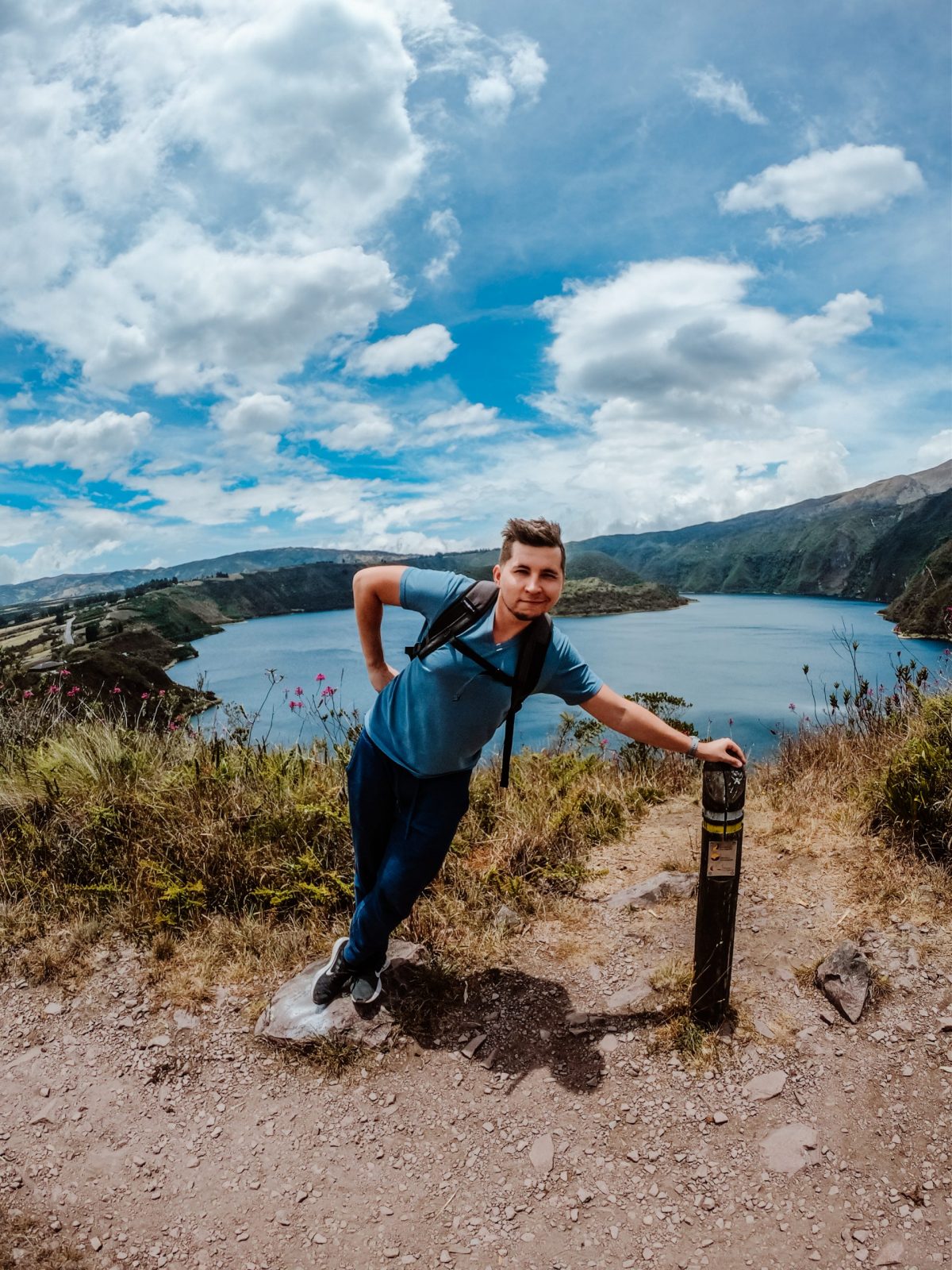
Planning trip to Ecuador?
My wife and I rented a car for 15 days and traveled from the northern part of Ecuador to the south, visiting amazing cities like Quito, Otavalo, Baños, Cuenca, and Guayaquil. Along the way, we explored iconic places such as Cotopaxi National Park, Quilotoa Lake, and many more breathtaking destinations.
Not many blogs cover traveling in Ecuador in detail, so I spent nearly three weeks creating this comprehensive Ecuador travel guide based on our trip. It’s packed with everything you need to know, and honestly, I consider it the best free travel guide about Ecuador out there.
If you’re planning a trip to Ecuador, don’t forget to use my link for discounted hotel prices through Booking.com. It’s a great way to support my blog while saving money on your accommodations!
Conclusion
The Devil’s Nose Train truly stands out as one of Ecuador’s must-do experiences. The town of Alausí itself, with its warm community and rich culture, made the journey even more meaningful and added a unique, authentic charm that’s hard to find elsewhere. Though it’s a bit of a splurge, I’d say it’s worth every penny.
The route is not only stunning but also offers a refreshingly different type of train adventure—one that even non-train enthusiasts can appreciate. If you’re planning a trip to Ecuador, make sure to add this memorable journey to your list. We thoroughly enjoyed every moment and wholeheartedly recommend it to anyone seeking a unique adventure in Ecuador.
Plan perfect trip to Ecuador & Galapagos
I spent countless hours researching everything about traveling to Ecuador, and I created this blog for fellow travel enthusiasts who want the best, most reliable information. But if you want to save time, we’ve partnered with the top local agency to plan your dream trip.

